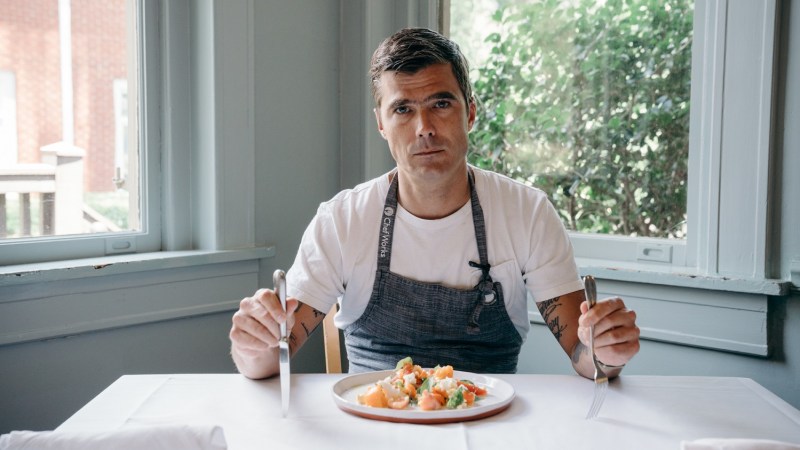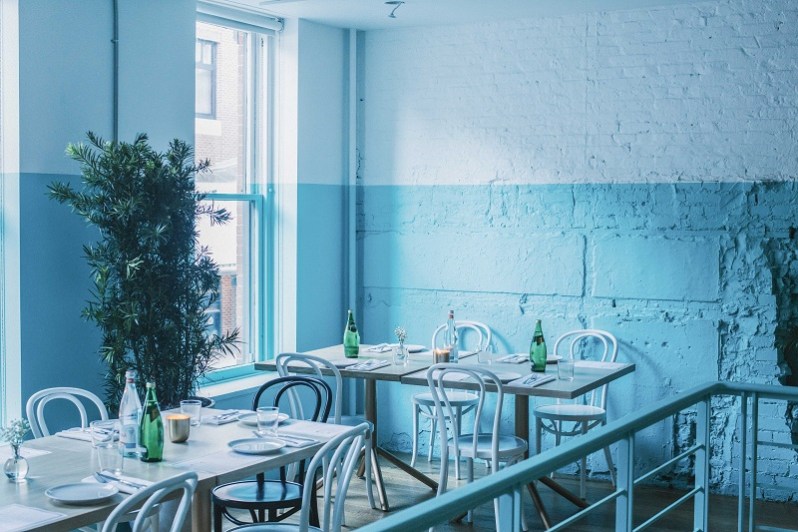
Before he could get started, though, he had to make sure everything was ready to go.
“When doing a residency like this, we need enough equipment to work on, a space that’s not primitive and basic but is suited to serving ninety people a night in a fast-paced environment, and skilled staff that understand the idea of culinary authenticity. I don’t want them just rushing through projects for no reason,” he says.
Once the staff and space were ready, the next step was fine-tuning the menu. Acheson said that he planned a menu that would be doable, delicious, and a testament to “Southern food in the way I want to express Southern food.”
However, the concept of Southern food isn’t as easy to unpack as many would like it to be (or as many think it already is), however. “[It] should be an agrarian reaction to a season, through food of simplicity that’s been through a lot historically.” The cuisine isn’t just chicken fried in lard and biscuits and gravy, nor is it gallons of Mountain Dew and greasy food wrappers.

“Authentic Southern food came here in the pockets of slaves and on the backs of a gross period in history, so we have to pay homage to that and understand that. There’s beauty there in that survival,” Acheson says.
It’s through food that Acheson works to pay homage to the grim history attached to Southern cuisine. Acheson says he is working to tell a story about the South — about how it has changed, about where he and others want it to be, and about just how important food is to the South identity.
Menu items included West African-influenced stews as well as a variety of light good that Acheson says was surprising for many people.
“I’ve heard multiple people say ‘Wow, I feel full but I feel great,’ and that’s not typical for a lot of ‘Southern’ restaurant outside of the South. You’re typically served gloppy grits and a fried pork cutlet with collard greens on the side. Sure, that’s an aspect of Southern food, but that’s not the totality of Southern food,” Acheson says.
For those that have had bad experiences with what are seen as typical Southern dishes, Acheson says he hopes that his menu helped them realize the potential for evolving staple meals.
“So many food memories we have are tainted by tasting one dish once, and maybe it wasn’t so good and we really don’t want to go back to it even though it’s a foundational, epic Southern dish [like she-crab soup, which was on the menu]. When we’re able to take a rendition of that and modernize it and lighten it and make it really fresh and beautiful, then I think it reshapes perspective.”
Acheson pays attention to both the physical nature of being in a place but also his determination to understand the academic side of the food as well. Immersing himself in writers like Edna Lewis , Frank Stitt , and John T. Edge helped Acheson understand the stories that came before his dishes and how he could contribute to that conversation in some way.
“I think that you have to have an endless curiosity in the work or the art that you love and food or drink was my endless topic,” he says. Acheson was then able to take that knowledge and translate into recipes, restaurants, and more.

“I think Southerners are portrayed in a generalized way that isn’t necessarily true and I think it’s really interesting to show that,” he says. Part of showing that for Acheson has been educating Southerners on the cultural history of many of the dishes that they grew up with—and sometimes wrongly attributed historically.
“There’s a certain cultural honesty that I think they’re waking up to. It binds and clarifies the difference between soul food and Southern food, which are essentially the same thing. For me, it’s interesting to look into it and reframe it.”
In his next cookbook, Acheson too is also looking to reframe the public’s ideas on something ingrained in American culture — the slow cooker.
In The Chef and the Slow Cooker , Acheson wants to show people leading busy lives with children and obligations that you don’t have to just subscribe to meal services like Blue Apron to be able to create delicious meals at home.
“I always had a slow cooker and for years I don’t think I really pulled it out of the closet. One day I started making chicken stock in it,” he says. “It’s a great device for walking away and going to work or doing whatever you’re doing.”
“We’re really busy these days, but we also have this craving to cook from scratch, so in lieu of sending away for a prepped meal you can cook in ten minutes, why not do it yourself and learn the beauty of buying from the farmer’s market and doing basic prep?”
When he started researching recipes, most from the 1950s and 1960s, he found that many focused on canned and frozen goods — but you won’t find those in his book. Acheson’s original
“It’s taking food to a different level with a contemporary nod,” Acheson says.
While the book will not be out until mid-October, you’ll have to excuse us while we go make sure our slow cooker is in working order.




